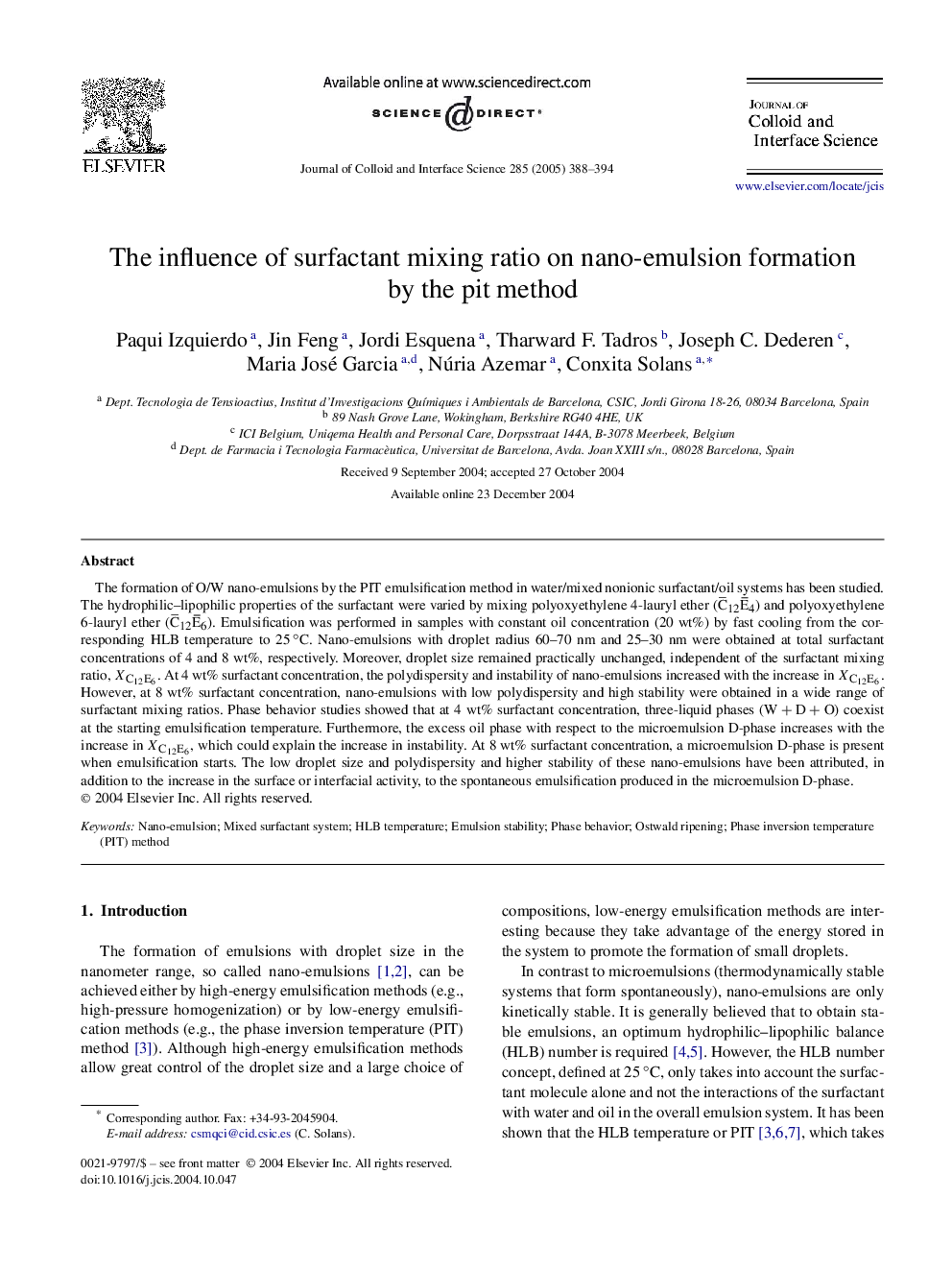| Article ID | Journal | Published Year | Pages | File Type |
|---|---|---|---|---|
| 10378114 | Journal of Colloid and Interface Science | 2005 | 7 Pages |
Abstract
The formation of O/W nano-emulsions by the PIT emulsification method in water/mixed nonionic surfactant/oil systems has been studied. The hydrophilic-lipophilic properties of the surfactant were varied by mixing polyoxyethylene 4-lauryl ether (C¯12E¯4) and polyoxyethylene 6-lauryl ether (C¯12E¯6). Emulsification was performed in samples with constant oil concentration (20 wt%) by fast cooling from the corresponding HLB temperature to 25â°C. Nano-emulsions with droplet radius 60-70 nm and 25-30 nm were obtained at total surfactant concentrations of 4 and 8 wt%, respectively. Moreover, droplet size remained practically unchanged, independent of the surfactant mixing ratio, XC12E6. At 4 wt% surfactant concentration, the polydispersity and instability of nano-emulsions increased with the increase in XC12E6. However, at 8 wt% surfactant concentration, nano-emulsions with low polydispersity and high stability were obtained in a wide range of surfactant mixing ratios. Phase behavior studies showed that at 4 wt% surfactant concentration, three-liquid phases (W + D + O) coexist at the starting emulsification temperature. Furthermore, the excess oil phase with respect to the microemulsion D-phase increases with the increase in XC12E6, which could explain the increase in instability. At 8 wt% surfactant concentration, a microemulsion D-phase is present when emulsification starts. The low droplet size and polydispersity and higher stability of these nano-emulsions have been attributed, in addition to the increase in the surface or interfacial activity, to the spontaneous emulsification produced in the microemulsion D-phase.
Keywords
Related Topics
Physical Sciences and Engineering
Chemical Engineering
Colloid and Surface Chemistry
Authors
Paqui Izquierdo, Jin Feng, Jordi Esquena, Tharward F. Tadros, Joseph C. Dederen, Maria José Garcia, Núria Azemar, Conxita Solans,
